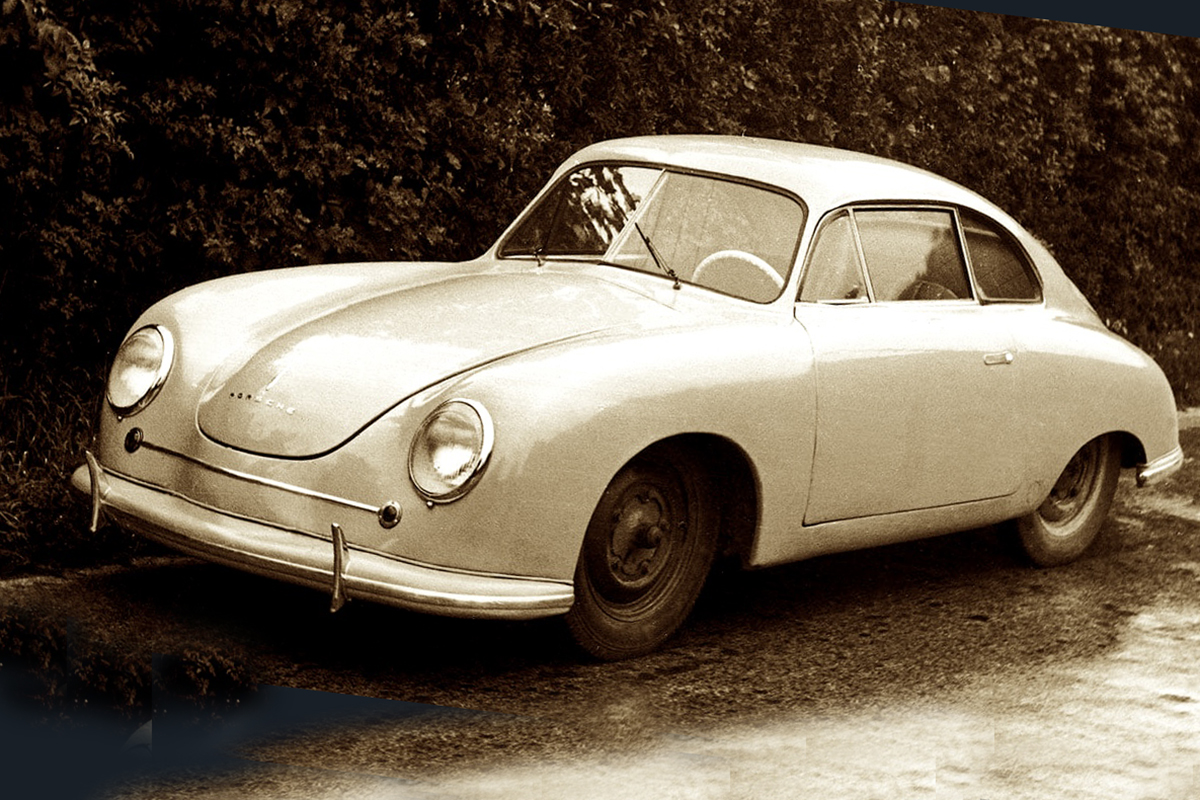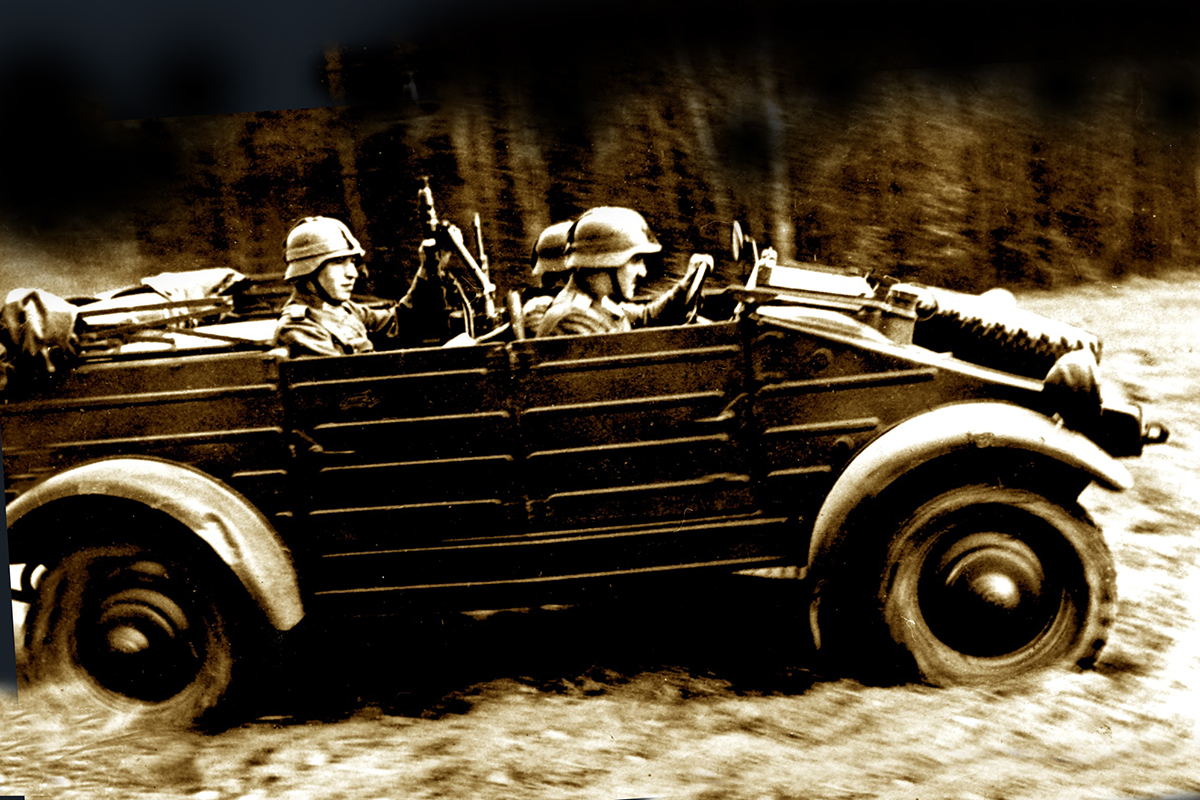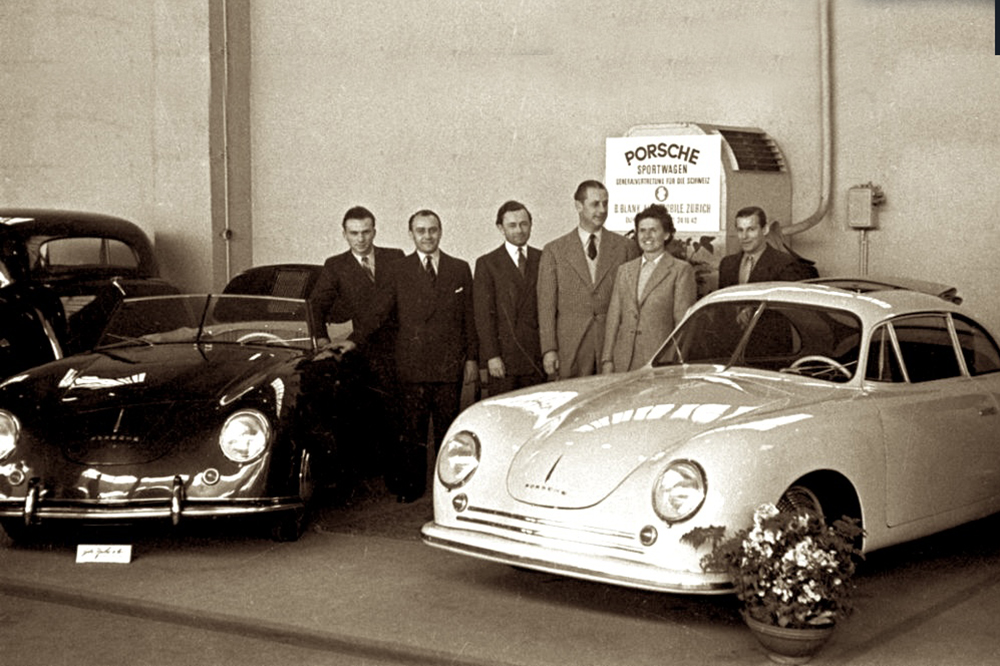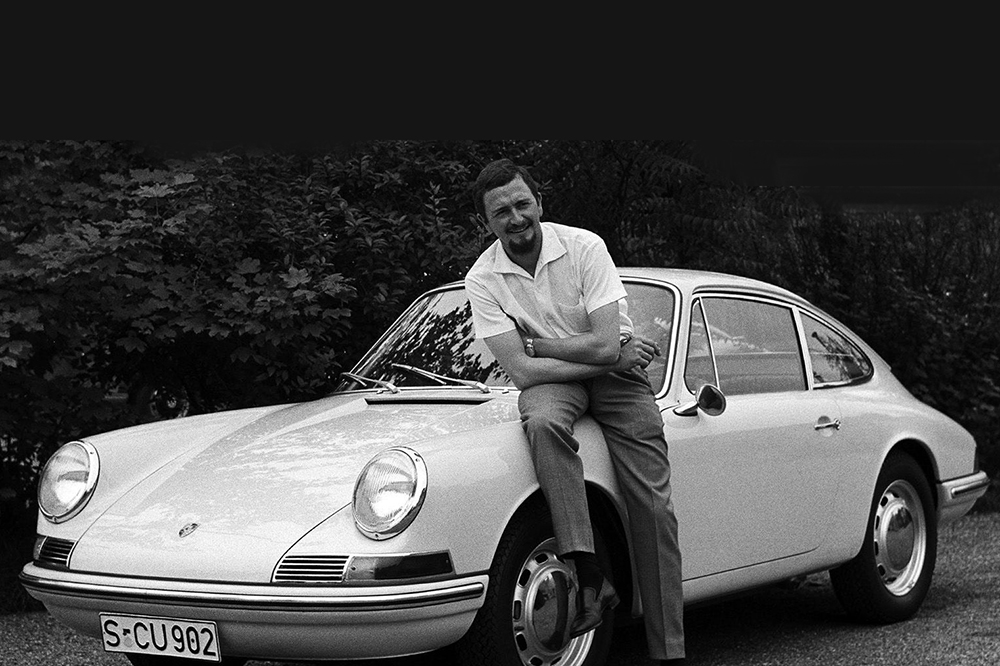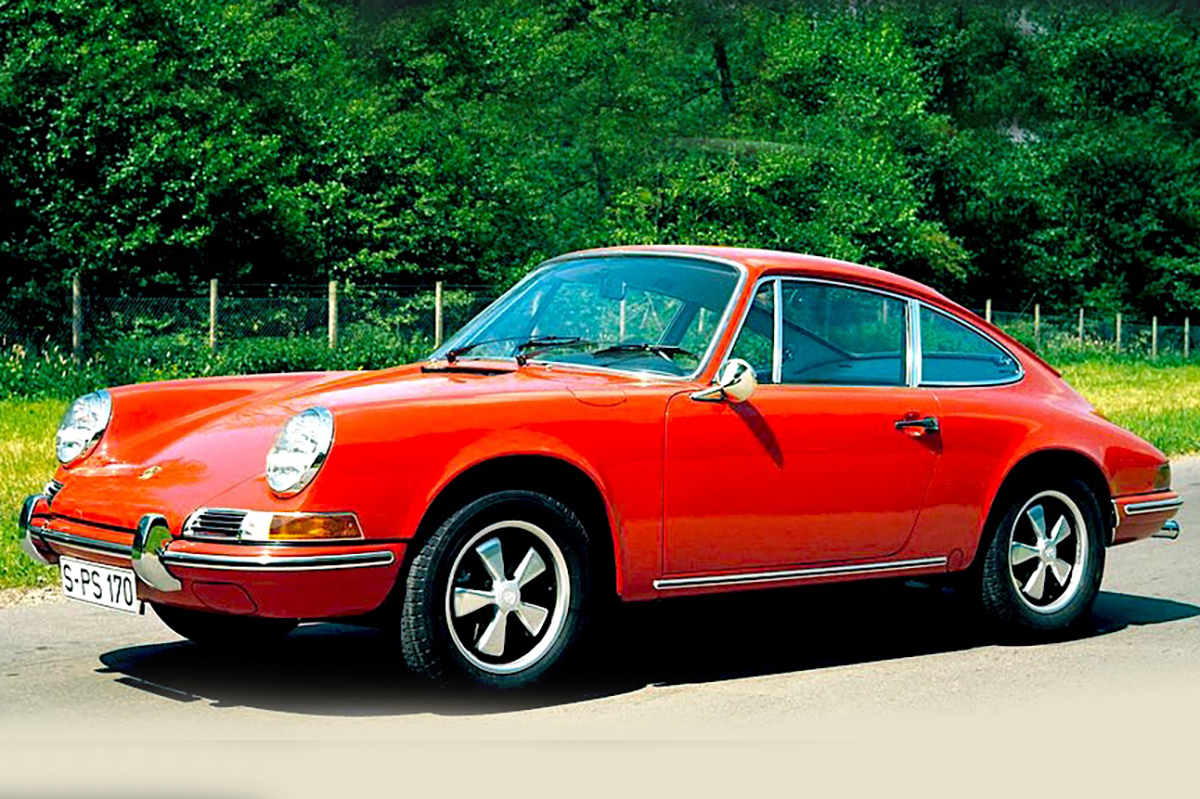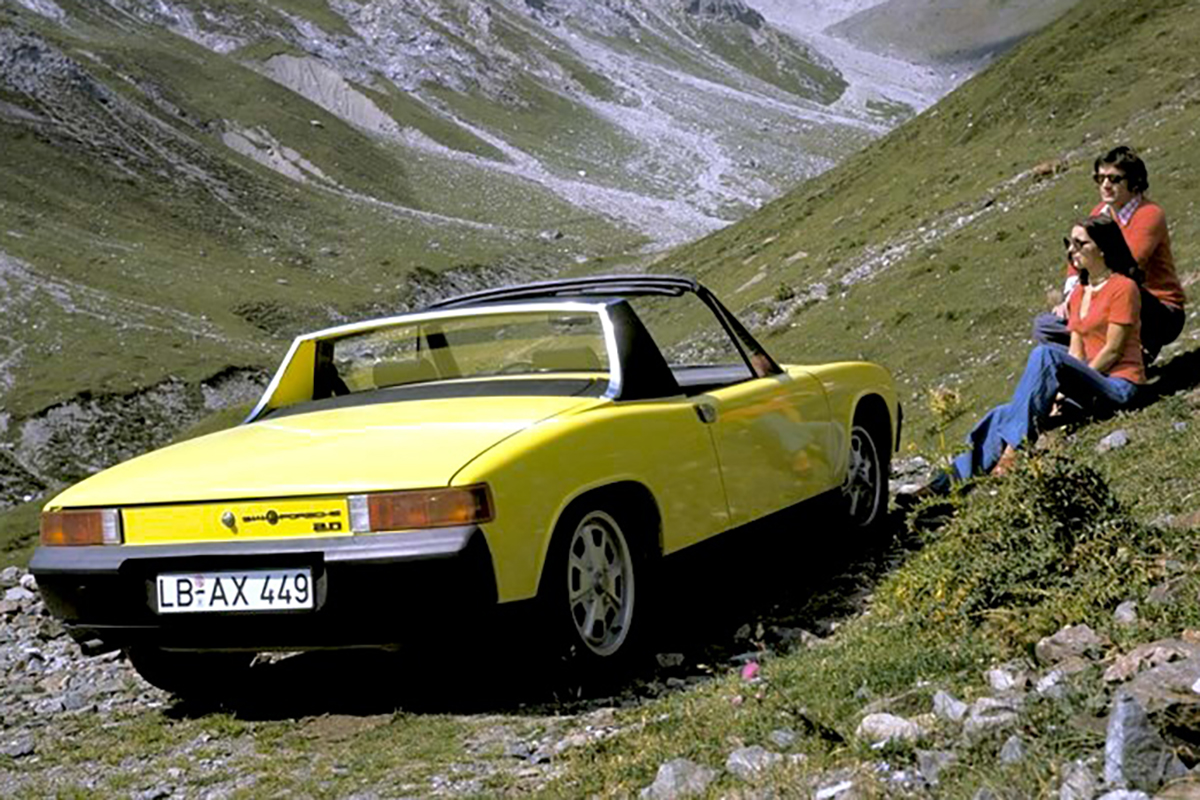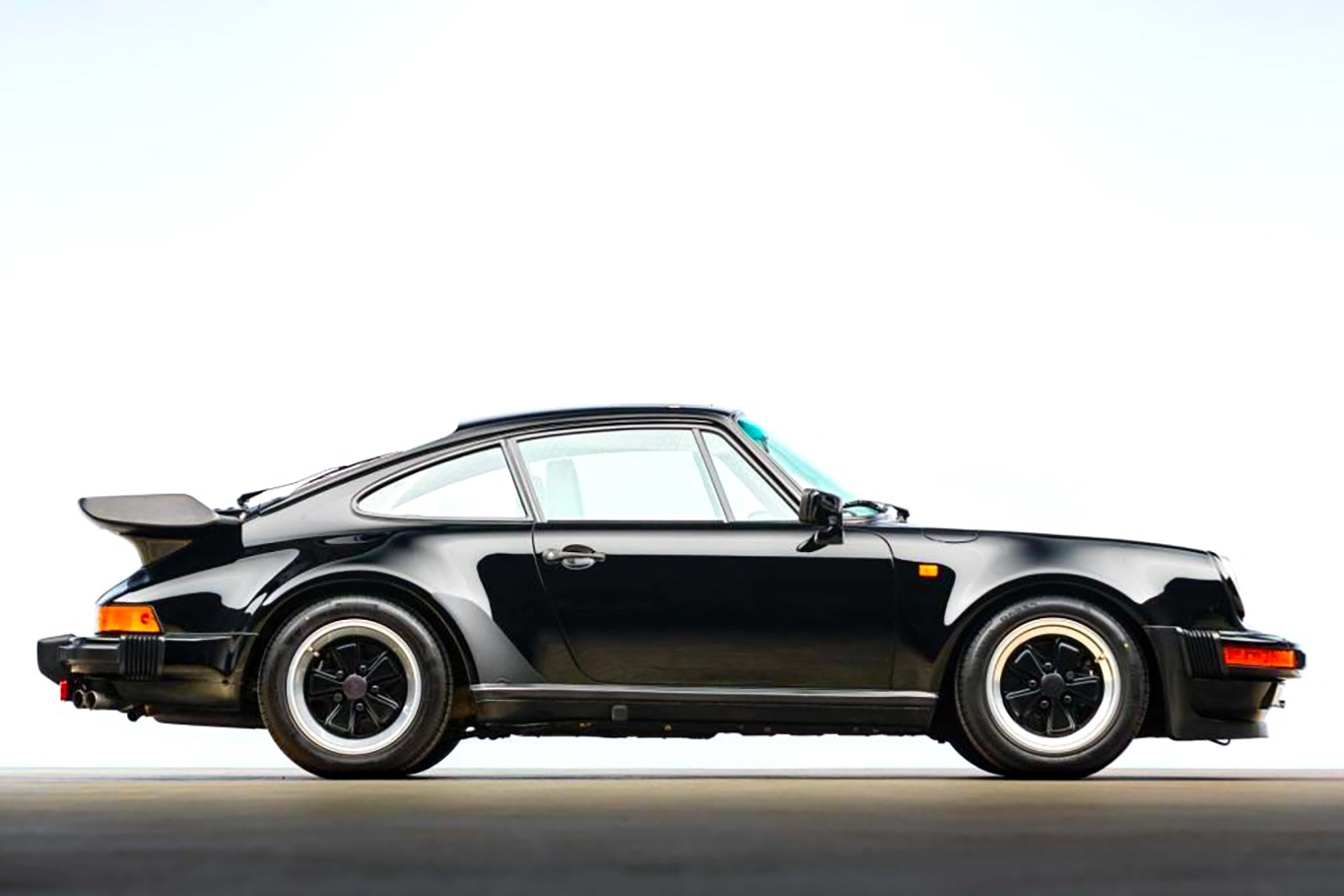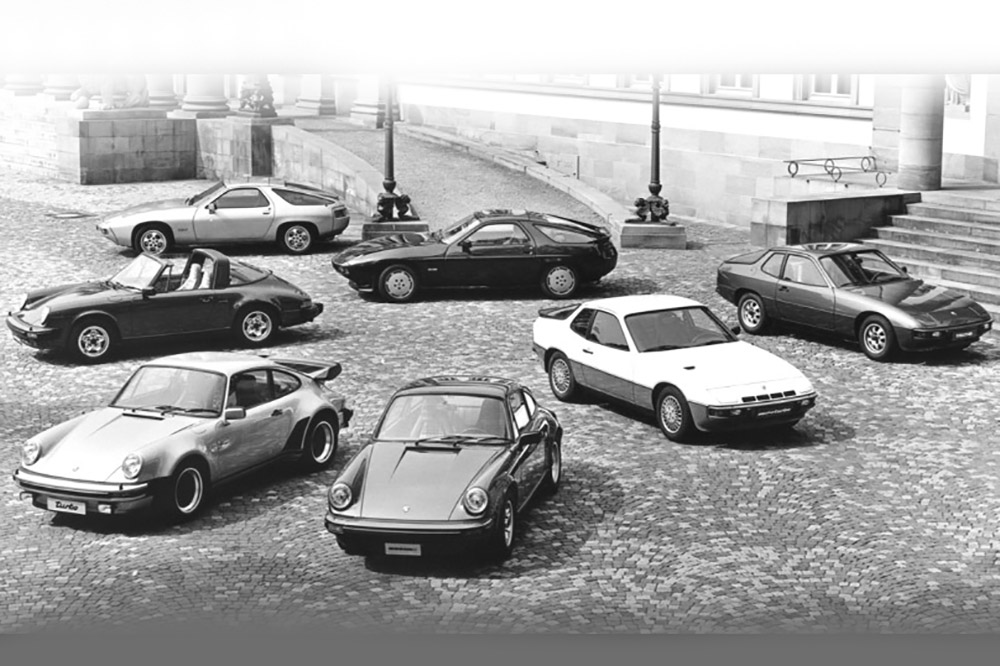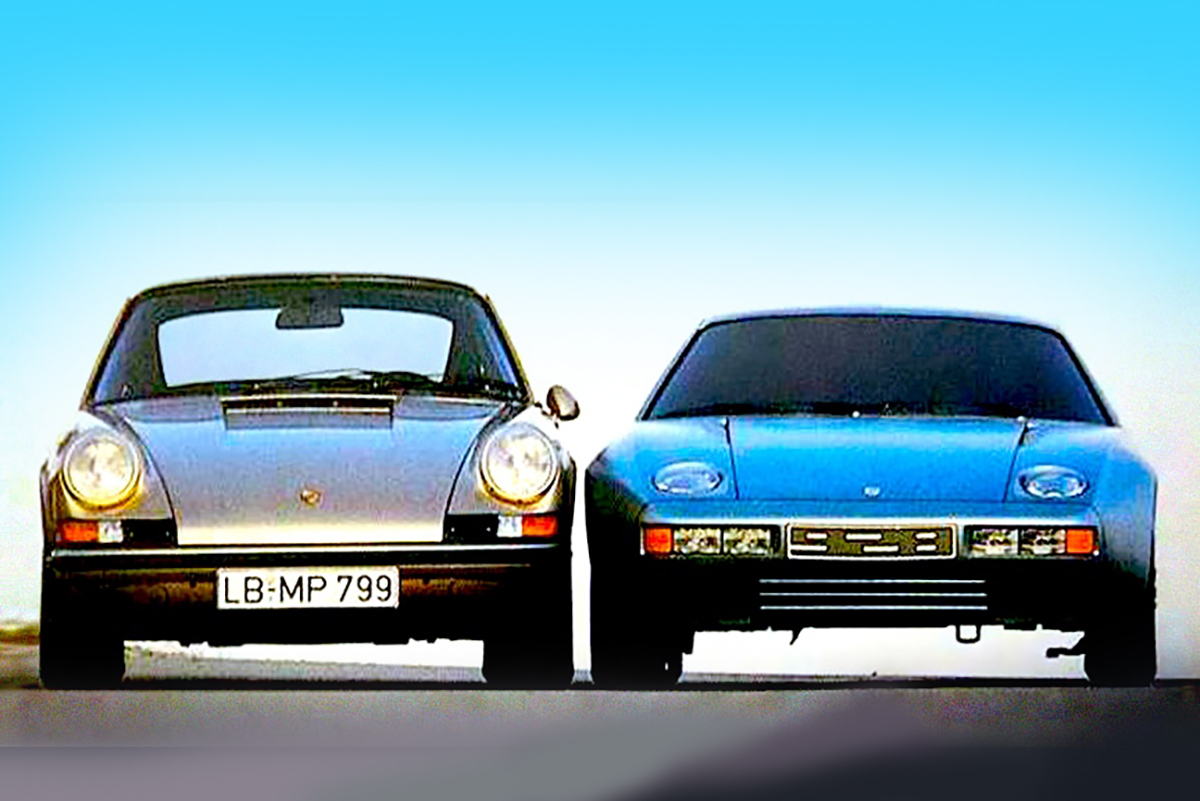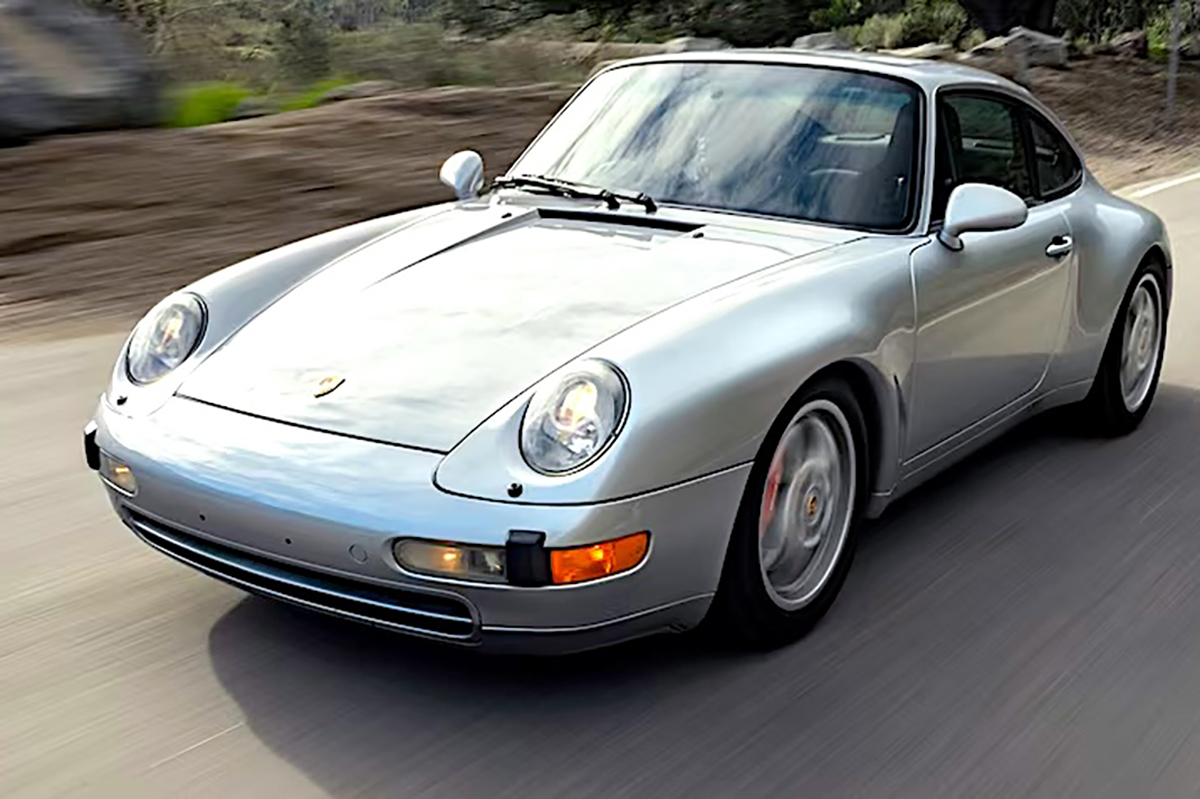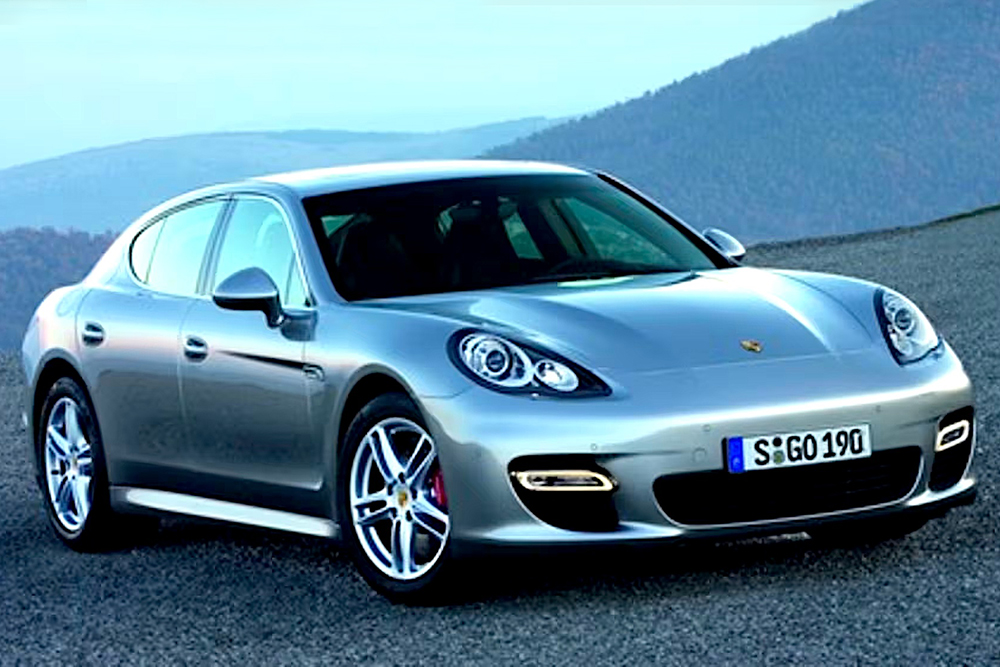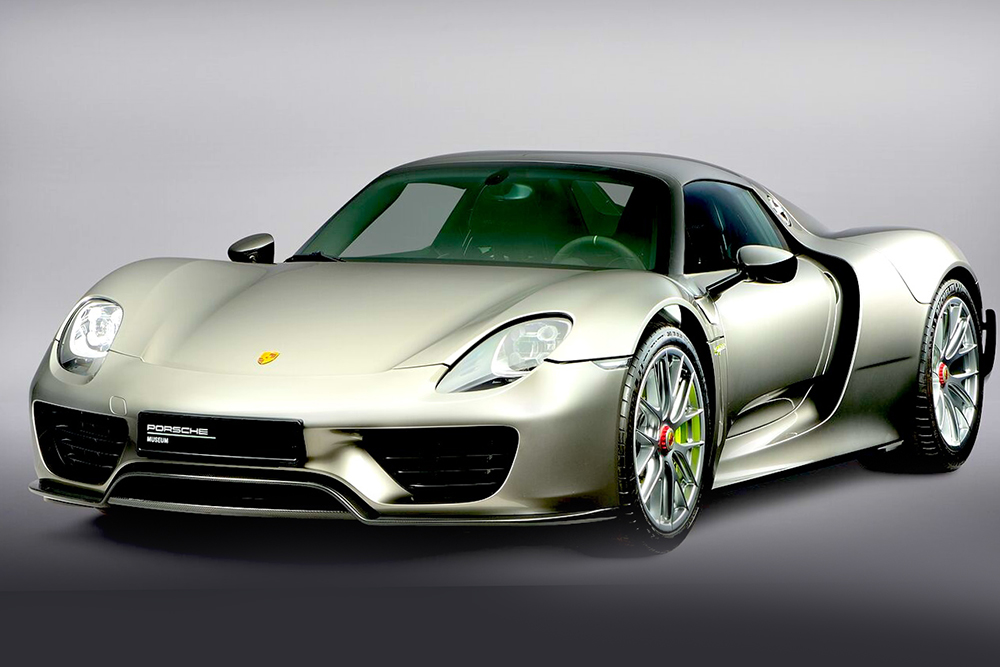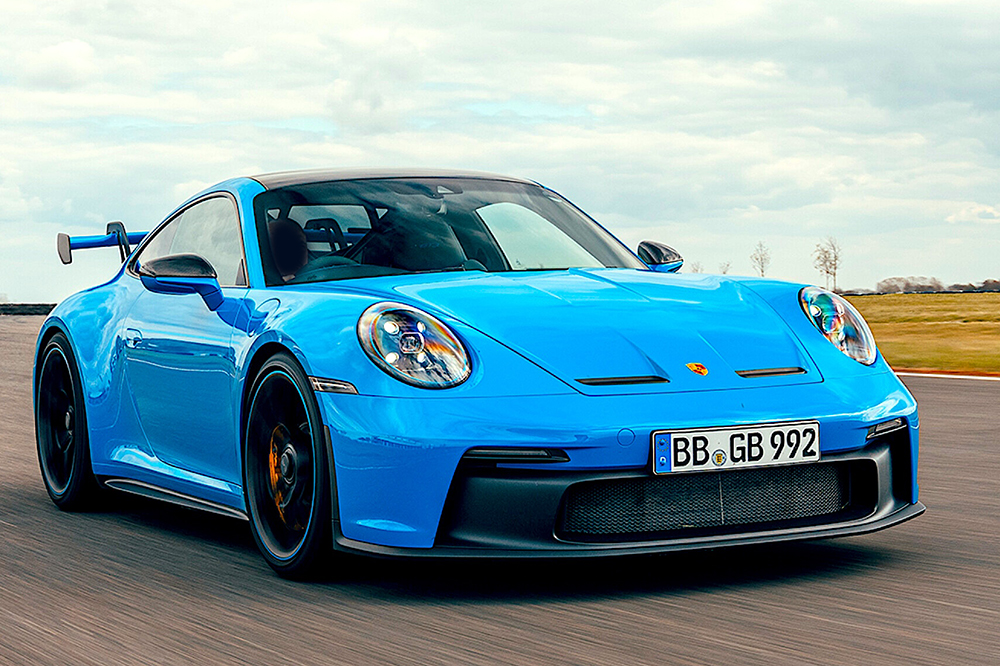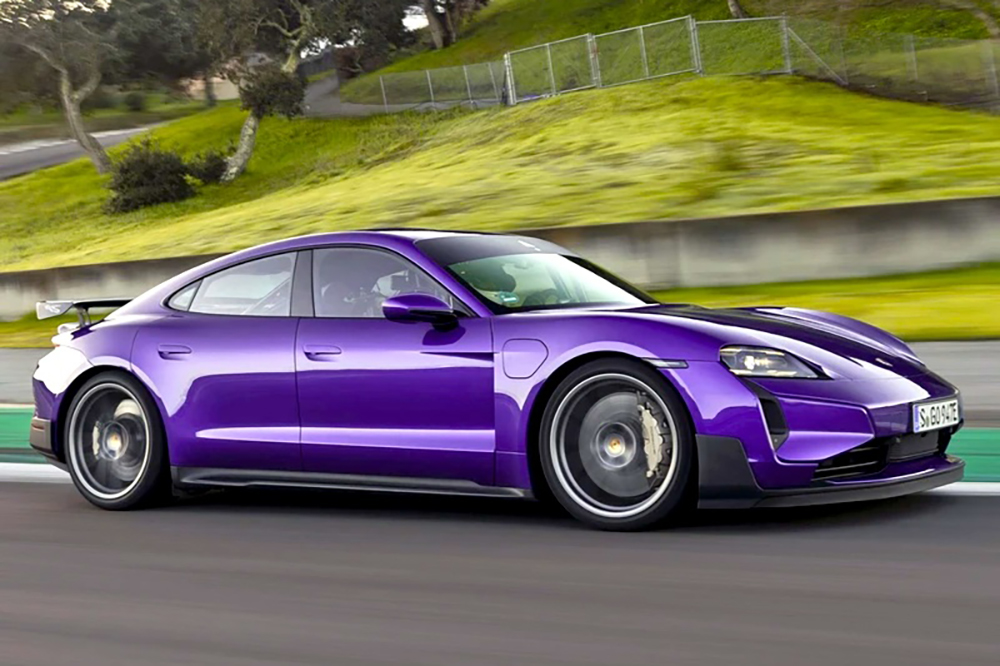Happy Birthday Porsche: 14 Amazing Facts About Germany’s Iconic Brand
Despite being Volkswagen Group’s flagship today, Porsche has been its own brand for 75 years since the 356 was launched in Geneva in 1949.
Porsche has now produced its own cars for 75 years. While company origins may indeed date back to the 1930s, the first Porsche was only revealed at the Geneva Motor Show 75 years ago on March 17, 1949. The 356 broke cover in both coupé and cabriolet guises on a humble show stand at the Swiss car salon.
Dr. Ing. h.c. F. Porsche AG was originally founded by prominent Czech-German auto engineer Ferdinand Porsche along with then son in law, Austrian businessman Anton Piëch and Adolf Rosenberger. He would go on to establish Auto Union, one of the brands that later amalgamated into Audi.
Porsche AG was soon entrenched in the Auto Union Grand Prix project, contracted by Hitler’s Nazi German government to create the “People’s Car,” the Volkswagen Beetle, and even building tractors. All would prove greatly successful. The company’s ‘Porsche Tiger’ tank prototype was however beaten to on tender by Henschel & Son’s Tiger as World War II loomed.
1. Porsche Was Engaged by the German Wartime Government
Unperturbed, Porsche converted the Tiger to the Panzerjäger Elefant tank destroyer alongside production of the military Volkswagen Kübelwagen (above), and later developed the Maus super-heavy tank.
Post-War, unable to find a sportscar he would want to buy, Ferry Porsche decided to build his own car, and convinced Ferdinand to develop the 356. Ferdinand would however be arrested for his connections to Hitler and the Nazis after the conflict. He was imprisoned for war crimes, with British Army major Ivan Hirst placed in charge of Volkswagen in 1945.
With dad away, Ferry took over the reins and continued work on his sportscar project in a small sawmill in Gmünd, Austria. Ferdinand was released in 1948 and Porsche Senior immediately retook the reins. The 356 was styled by Beetle designer Erwin Komenda.
2. The Porsche 356 Started to Take Shape
Prototype aluminum bodied Porsches were shown to German dealers. Pre-orders soon met a set threshold, and production commenced at Porsche Konstruktionen. The 356 was then unveiled at the March 17 Geneva Motor Show (above), before Reutter Karosserie was commissioned to produce the 356’s steel body in Zuffenhausen.
With parts in short supply in post-war Germany, the 356 mainly used Beetle components including the engine block, gearbox, and suspension parts. The 356 evolved through A, B, and C variants, with Porsche parts gradually replacing the Beetle bits. By 1954, the more powerful 356 engines even sported their own blocks.
Demand was however such that in 1952, Porsche constructed its Werk 2 assembly plant across the street from Reutter, while also developing the 356 K/9-1 prototype. Following significant track success with the 356 and its 550 Spyder racer spin-off, demand steadily grew, and development soon began on a replacement for the 356.
3. First Porsche 911 Arrived in 1964
Porsche duly launched the all-new Porsche 911 in 1964, fifteen years after the car brand was first established. Still air-cooled and rear-engined, the 911 was however powered by a far more powerful Type 745 2-liter boxer six-cylinder engine. It had a 5-speed gearbox in a sleek all-new body developed by a team led by Ferry’s eldest son, FA Porsche (above).
Originally designated 901, the name contravened Peugeot’s ‘x0x’ brand trademarks, so it was adjusted to 911. The 904, 906, 908 and other race cars later picked up the lower sequence. Every schoolboy’s dream, the iconic 911 went on to become the poster Porsche with huge success on the racetrack, rally stages, and on the road.
More powerful, larger, more comfortable, and now a marginal 4-seater, the 911 served a more upmarket audience to the 356, for which there was still great demand. To that end, Porsche introduced the 912 in 1966. It was essentially a cut-price 911 with a 356-derived Type 616/36 boxer four-cylinder engine.
4. Powerful 911S Had 160 HP on Tap
Porsche introduced the more powerful 160 HP 911S with Fuchs forged 5-spoke aluminum wheels in 1966. 1967 brought the A series 911 with dual brake circuits, widened wheels. The open hardtop Targa (Italian for plate) also arrived with its stainless steel-clad roll hoop to meet strict new US convertible laws.
Covering both sides of the spectrum, the 20-off limited production 210 HP quad-cam magnesium block lightweight racing 911R and base model 130 HP 911T were also launched in 1967. Along with a clutchless semi-automatic Sportomatic gearbox. The B series followed in 1968, with the fuel injected 911E also replacing the 911L.
It was all change when the 2.3-inch longer wheelbase 911 C series followed, albeit in the same length 1969. In an effort to remedy the 911’s twitchy handling at the limit. The C also had bigger capacity 2.2-litre boxer engines now fuel injected in the 911S too. Slightly down on power, the C series however accelerated faster to 100 mph.
5. V0lkswagen-Porsche 914 Celebrated Ferdinand & The Beetle
Also in 1969, Porsche collaborated with Volkswagen to build the VW-Porsche 914 and 914-6 to replace the 912. The Targa-top 914 had a Volkswagen boxer-four engine, while the 914-6 had a Porsche six. It was built to celebrate Ferdinand Porsche designing the first Volkswagen Beetle.
Returning to the 911, the 1972 E series was bumped up to a 2,341 cc ‘2.4 liter’ with the 911 S and E stepping up to Bosch mechanical fuel injection and a stronger new gearbox now rid of its dogleg first position. The 1973 F series 911T gained Bosch K-Jetronic fuel injection, and the 911S a small spoiler under the front bumper. For high-speed stability.
In 1974, Porsche sold 1,580 homologation special 210 HP 911 Carrera 2.7 RSs. Carrera being Spanish for Race and saluting Porsche’s Mexican Panamericana race wins, and RS for Rennsport, or Race Sport in German. Fuel injected, with racing suspension, brakes, wheels, fenders, and a ducktail rear spoiler, 49 300 HP Carrera 2.8 RSRs were also built alongside a 2.1-litre Carrera RSR Turbo prototype.
6. All Change For the 1974 911 G Series
It was once again all change for the 1974 G series to meet significant new impact safety and emissions requirements around the world. It had a torquey new 2,7 litre boxer-six wit Bosch K-Jetronic fuel injection in the narrow body 163 HP 911 and 173 HP 911S. New low-speed impact bumpers met US regulations, and a ducktail spoiler was an option.
1975 was a big year for Porsche with its first turbocharged production car. The 260 HP four-speed manual 911, or 930 Turbo with its wide body and whale tail would reinvent the supercar world with giant-killing performance as a fraction of the price of its so-called’ exotic’ rivals. The 930 spawned 934 and 935 racers that also dominated on track.
The regular 200 HP 911 Carrera 3.0 coupé and Targa arrived with a wide body and a normally aspirated aluminum version of the turbo engine in 1976. The ‘78 180 HP 3-litre 5-speed 911SC picked its name up from the 356SC racer. The 930 Turbo was up to a 300 HP 3.3-litre boxer 6 to reduce turbo lag, with an intercooler in a new ‘tea-tray rear wing.
7. Management Tried to Kill the 911 Off
Stepping back to the boardroom, Porsche AG went public with a Honda-inspired executive board tabled by members from outside of the Porsche family, alongside a Porsche family supervisory board. That prompted the likes of scions FA Porsche and Ferdinand Piëch to seek greener pastures in Porsche Design, and and an engineering consultancy that would see Piëch end up as Volkswagen Group chairman.
Porsche AG’s first CEO, long-time engineer Ernst Fuhrmann took the helm and plotted to kill the 911. The Porsche icon was to be replaced with the front engined grand coupes. The 92 HP Audi powered 924 soon replaced the 914 as the Porsche’s entry-level in its first water cooled front-engine, rear-drive car with an automatic option. It rose to 110 HP, while the wieldy 924 Turbo made 170 HP. The 924 was culled in 1988.
The 300 HP front engined V8 Porsche 928 followed in 1978, before the 165 HP 2.5-litre 944 and up to 250 HP 944 Turbo were inserted above the 924 in ’82. Against Fuhrmann’s better judgement, the 911 remained hugely popular and would long outlive the 928, the 924 and its 944 successor, which all disappeared from the market by 1995.
8. Porsche 911 Defied its Doubters
In spite of Fuhrmann’s plot, 911 demand remained so strong that production romped on and new CEO and 911 fan Peter W. Schutz was soon in charge. Under Schutz’ tenure, the 911SC was stoked up to 204 HP by 1981, before the first 911 Cabriolet arrived in late ’82. It was the first drop-top Porsche since the 356.
The Porsche 911 3.2 revived the Carrera name as it replaced the SC in the final version of the original 911 in 1984. Its 80% new 210 HP high compression 3.2-litre boxer-6 had a new five-speed Getrag gearbox. There was also a Turbo-Look option for its Coupé, Cabriolet and Targa variants. A lightweight Club Sport was added and the CE celebrated quarter-million 911s in ’88. A 25th birthday SE followed and the 930 gained a 5-speed gearbox in ’89.
The 911 underwent its first major evolution to the 964 in 1989. Inspired by the wild all-wheel drive Le Mans and Dakar 959, the AWC drive Carrera 4 developed 250 HP. It was soon joined by the rear-drive Carrera 2 and a new 911 Turbo with a refined 3.3 liter six. A Tiptronic automatic followed before the Turbo stepped up to a new 3.6 in ’91. A new normally aspirated RS followed and that was soon up to the 300 HP RS 3.8.
9. Final Aircooled 911 Was the Finest
The sleeker new 993 Series followed in 1994 with multilink rear end to settle that 911 balance. This final air-cooled 911 is considered to be the finest of them all. The range included 286 HP 3.6-litre in Carrera 2 and 4 in coupé, cabriolet and glass sliding Targa bodies. The 300 HP rear drive 3.8 RS and 408 HP 200 mph biturbo AWD 993 Turbo S topped the range. A few street versions of the Le Mans 911 GT1 version were sold too.
With the ultimate demise of the 924, 928 and 944 by the mid-‘90s, Porsche introduced its all-new Boxster, in the boxer vein, in 1996. The entry level two-seater spyder featured its boxer-6 midships, instead of hanging off the rear end. Considered a pure handler, the Boxster proved an instant success as it picked up the entry Porsche baton.
Back to the 911, the controversial all-new 1999 996 broke all the rules by dumping air for water cooling. It delivered over a dozen different models from the 300 HP all-wheel-drive Carrera to the new 365 HP track day GT3 and even wilder GT3 RS, the Turbo and 444 HP flagship AWD GT2.
10. Cayenne Crossover Was a Radical Shift
Porsche has however changed rapidly in the past 20 years. The company stepped right out of the box to introduce its first SUV, the luxury crossover Cayman in 2002. The all-terrain AWD brought a V8 back to Porsche’s first production off-road passenger vehicle. Cayenne also introduced the first turbodiesel and is considered to be the volume seller that pushed Porsche along.
2004 brought the 600 HP Formula 1 V10 powered Carrera GT. Before the heavily revised 997 911 arrived in 2005 starting with the 325 HP Carrera and Carrera 4. They came in all body styles, all the way up to the 480 HP biturbo and wild 523 HP GT2. That was replaced by the bigger, bolder all-new 991 911 in 2012 with the 355 HP Carrera up to the mad 620 HP GT2 RS.
The second-generation Boxster and its all-new coupé sibling Cayman arrived in 2006. Both models have twice since evolved into the current range. Now known as 718 Boxster and 718 Cayman, they have turbo boxer four-cylinder engines. Except for the 400 HP GTS and 420 HP GT4 with a normally aspirated 4-litre boxer 6 engine.
11. Strictly 2+2 Panamera Was Porsche’s First Limo
Porsche’s first sports limousine, the powerful and sleek, strictly 2+2 Panamera, derived from Carrera and Panamericana, debuted 2009. Its hybrid and diesel models joined gas versions in 2011. A second generation Panamera followed in 2016. The third step is set for imminent release in 350 HP biturbo V6 and two V8 Hybrid versions up to 680 HP.
Porsche has also shrugged off several more management revolutions in the more recent past. Dr. Ing. h.c. F. Porsche AG became the family held Porsche SE in 2007, with Porsche AG repositioned as manufacturer. Volkswagen AG then acquired Porsche AG to form Integrated Automotive Group in 2009. A Porsche IPO was since floated in 2022.
Through all that, the second Cayenne arrived in 2010, with the third version following in 2017. The latest Cayenne is now in the throes of its launch with similar drivetrains to the latest Panamera. The third Boxster was meanwhile launched in 2012, before of this fourth generation became known as the 718 Boxster and Porsche 718 Cayman from 2016.
12. Porsche Jumped on the Electric Bandwagon
The smaller compact luxury crossover Macan SUV has also since joined the Cayenne on the Porsche range. Its second generation, complete with an all-new electric model also imminently due for launch. Cayenne and 718 EVs are also in the Porsche works.
Porsche first jumped on the electric bandwagon with the wild 875 HP hybrid 918 Spyder. It combined a V8 engine with two electric motors powered by a 6.8 kWh lithium-ion battery. That was a precursor to Porsche’s first all-electric car. The Taycan EV arrived in 2019, topped by this week’s reveal of the all-new 1019 HP Taycan GT Turbo.
The current Porsche 992 911 evolved even wider in 2019. The range starts with the 380 HP 3.7-litre biturbo boxer six Carrera in straight, T, S, 4, 4S and GTS models. They still come in coupé, Cabriolet and Targa body styles. Add the Turbo and 650 HP Turbo S coupé and cabriolet. And the GT3 with its Touring and 525 HP aspirated RWD RS (below) siblings.
13. The Next Porsche 911 Will Also be a Hybrid
The next evolution of the 911 is also expected as part of Porsche’s biggest ever new car launch year. The range will include an all-new hybrid model. Porsche has meanwhile embarked on a major digitization, alternate propulsion and fuels drive. As the company ponders an uncertain and challenging motoring future.
Porsche is committed to deliver to a combination of three powertrain types. Including efficient ICEs, exciting plug-in hybrids, and innovative all-electric models. Part of this strategy is to retain the greatest possible flexibility in the production of the different powertrain types.
The company is meanwhile focused on producing eFuels to reduce fossil CO2 emissions on an industrial scale. Renewable synthetic fuels allow combustion engines to operate close to carbon neutral. With1.3 billion combustion vehicles in the road, many will still be running for many years while rural markets will not evolve to EVs.
14. Porsche Is Committed to an EV, Hybrid & ICE Future
Porsche also plans to deliver more than 80% electrified new vehicles going forward. Fully depending on customer demand and the development of electromobility in respective world markets.
Those plans include the use of more environmentally friendly materials in its new cars. The company supports the expansion of renewable energies to cover the electricity demands all-electric fleets are expected to require.
Porsche remains committed to investing in its brand and its people, ecosystem, innovation, digitization, and sustainability. It has pushed massively in digital and software partnerships. Group sales for 2023 was up 7.7 percent to 40.5 billion Euros with operating profit up 7.6 percent to 7.3 billion Euros. Return on sales remained steady at 18.0 per cent.
Now 75 years on, there’s little doubt that Porsche is set to continue on its course of iconic supercar success for the next three-quarters of a century. All considered, the mind boggles at there the company will be by then.
Photos: Porsche

